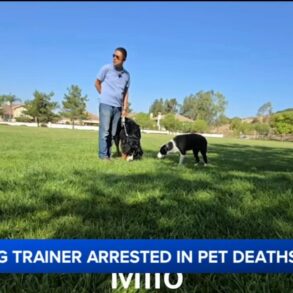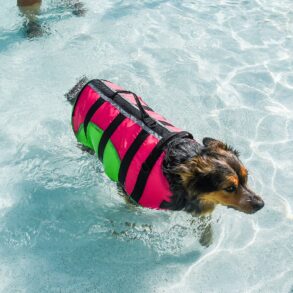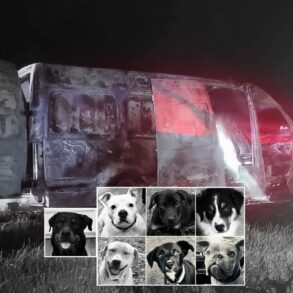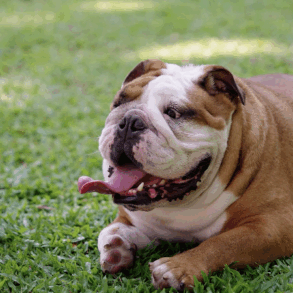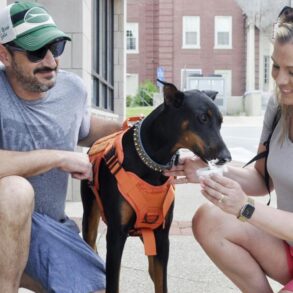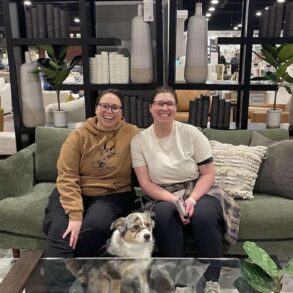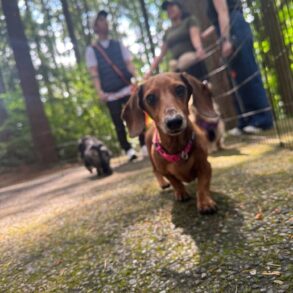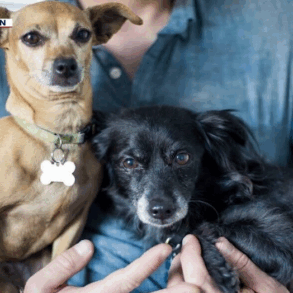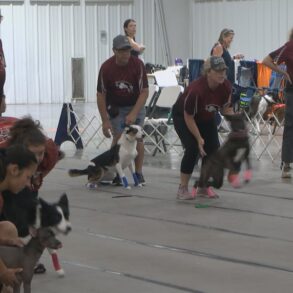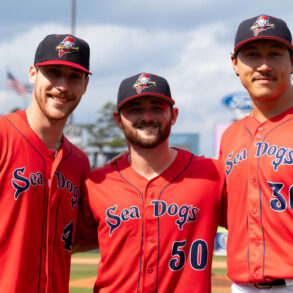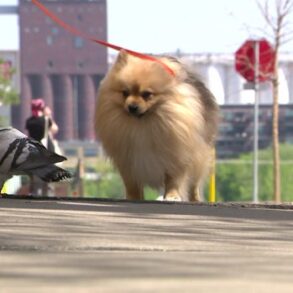
Produced by ElevenLabs and News Over Audio (NOA) using AI narration.
Not so long ago, dogs were valued primarily for the jobs they performed. They hunted, herded livestock, and guarded property, which required them to have an active prey drive, boundless energy, and a wariness toward strangers. Even a few decades ago, many dogs were expected to guard the house and the people in it. Prey drive kept squirrels off the bird feeders and used up some of that boundless energy.
In just a generation, we humans have abruptly changed the rules on our dogs. With urbanization increasing and space at a premium, the wild, abandoned places where children and dogs used to roam have disappeared from many American communities. Dogs have gone from working all day and sleeping outside to relaxing on the couch and sleeping in our beds. They are more a part of our families than ever—which means they share our indoor, sedentary lifestyle. Americans once wanted a dog that barked at every noise, but modern life best suits a pet that will settle nicely under the desk during remote work, politely greet guests, make friends with cats, and play nice (but not hump) in the dog park.
Thousands of years of domestication couldn’t prepare dogs for this abrupt transition. However, after studying the cognition of 101 Canine Companion service-dog puppies at the Duke Puppy Kindergarten, we realized that these dogs are uniquely well adapted to life in the 21st century. Service dogs (the real, certified kind, not the ones whose humans bought their vests on Amazon) are highly trained professionals. They assist with specific tasks that their person cannot perform alone, such as helping to load laundry into the washer, turning on lights, and opening doors. Between all that effort, service dogs fit into the life of their person in a way that many able-bodied dog owners want their pets to fit into theirs. For the happiness of dogs and their owners, humans need to breed and train more dogs like service animals, embarking on a new wave of dog domestication to help them fit into the new world we have created.
The first dogs began evolving 40,000 to 14,000 years ago, when humans lived as foragers. (Some evidence suggests that this first version of domestication may have occurred multiple times around the world.) Our ancestors left garbage and waste outside of camp, and the wolves that took advantage of this predictable, energy-rich food source gained a survival edge. As a result, over generations, the animals’ attraction to humans replaced fear and aggression. This natural selection for friendliness is thought to have also caused many accidental changes—such as floppy ears, curly tails, and splotchy coats—as well as the ability to make eye contact and read human gestures in a way that wolves cannot.
The second wave of dog domestication largely occurred after the Industrial Revolution, when the newly ascendant middle class wanted dogs that would advertise the good taste and disposable income of their owners. Armed with an early awareness of genetically inherited traits and an obsession with pedigree, Westerners began controlling dogs’ reproductive choices, leading to the creation of most of the 200 dog breeds recognized by the American Kennel Club today. Whereas previous breeding emphasized hunting or herding abilities, this new wave became primarily about a dog’s appearance. With a few exceptions, that is where dog enthusiasts’ focus has remained.
Until about the 1990s, these pedigreed dogs were well adapted to the suburban lifestyle. They spent most of their lives outside, perhaps jumping the fence and roaming the neighborhood. They might chase the occasional car or mailman, or even wander off for a day or two. Veterinary medication was not what it is today, and if your dog slept on your bed, you would likely wake up covered in ticks or fleas. But as more city dwellers adopt pets, and cultural shifts have led dogs and people to spend more time inside, some behaviors that made dogs appealing to our ancestors have become maladaptive. For instance, guarding against strange people and animals might make a dog more difficult to walk around the neighborhood—so it gets stuck in a small yard or a small apartment with tons of pent-up energy. Dogs that are more energetic, excitable, fearful, or anxious than average are more likely to be relinquished to shelters, where they may struggle to find a new home.
Many owners hope that simply choosing the right type of canine—a hypoallergenic breed, a smart breed, a breed that is supposedly good with children—will solve the mismatch between modern expectations and the evolved nature of dogs. But on the whole, breed does not determine the quantity of allergens an animal produces, the speed at which it learns, or how well it interacts with children. The main thing a dog’s breed will tell you, with any reliability, is what it looks like.
Service dogs are the exception and the answer to the domestication puzzle. For more than a century, service dogs have had to sit quietly in a café, calmly negotiate the stress and noise of urban life, and interact gently with children. They can do this not because they are smarter than pet dogs, but because, like those early proto-dogs, service dogs are uniquely friendly. Unlike most pet dogs, service dogs are attracted to strangers, even as puppies. And increasing friendliness seems to have changed these dogs’ biology, just as it did thousands of years ago. A 2017 study found that Canine Companion dogs have a higher level of oxytocin—the hormone that facilitates social bonding—than pet dogs.
We believe these changes are the early signs of a third wave in dog domestication. Service dogs may look like your average Labrador retriever, but compared with military working dogs or even the average family Lab, they are almost a different breed. If dog lovers shift their demand from a dog’s hair color and tail length to their comfort with strangers and new places, this friendliness could quickly ripple through the population and become amplified with each successive generation. Russian experiments on fox domestication in the 1950s suggested that selecting for a friendly temperament led to an increased attraction to humans, wagging tails, floppy ears, and splotchy coats within just a decade—though the foxes that the experiment began with came from fur farms, and therefore weren’t entirely new to selective breeding. The differences between Canine Companion dogs and pet dogs also demonstrate how different a population of dogs can become in less than 50 years. Even if dog breeders were not as strict as the Russian fox experimenters, a breeding program that prioritizes a friendly temperament could show results within just a few decades.
In the meantime, as the third wave of domestication gets under way, humans must continue caring for the pets they have now. Service-dog organizations don’t just breed for friendliness but also follow an extensive training protocol. They socialize their puppies as soon as the puppies are vaccinated, introducing them to a range of people and situations. They crate-train them, getting them used to alone time. They use positive reinforcement to encourage good behavior and take the puppies for lots of short walks throughout the day. All of these methods can be applied at home—but to do it right is a lot of work. If you’re not prepared for that, don’t get a puppy. Instead, foster an adult dog. Puppy personalities change and grow with time, but with foster dogs, which are usually older and have established personalities, you can test if they are a good fit for your family before committing.
And for those who already have a puppy or a dog that is less than perfect, be patient. Try to meet them where they are. Maybe they will never be comfortable romping in a park with strange people and dogs. Maybe guarding your window ledge from every passing squirrel is a responsibility they’re unable to surrender. Instead of trying to force them to change, which probably won’t work, acknowledge that modern life asks more of dogs than evolution prepared them for. Try to focus on the timeless skills that dogs already have: joyful greetings, love free from expectations, and a light spirit to brighten your days.
This post was originally published on this site be sure to check out more of their content.






